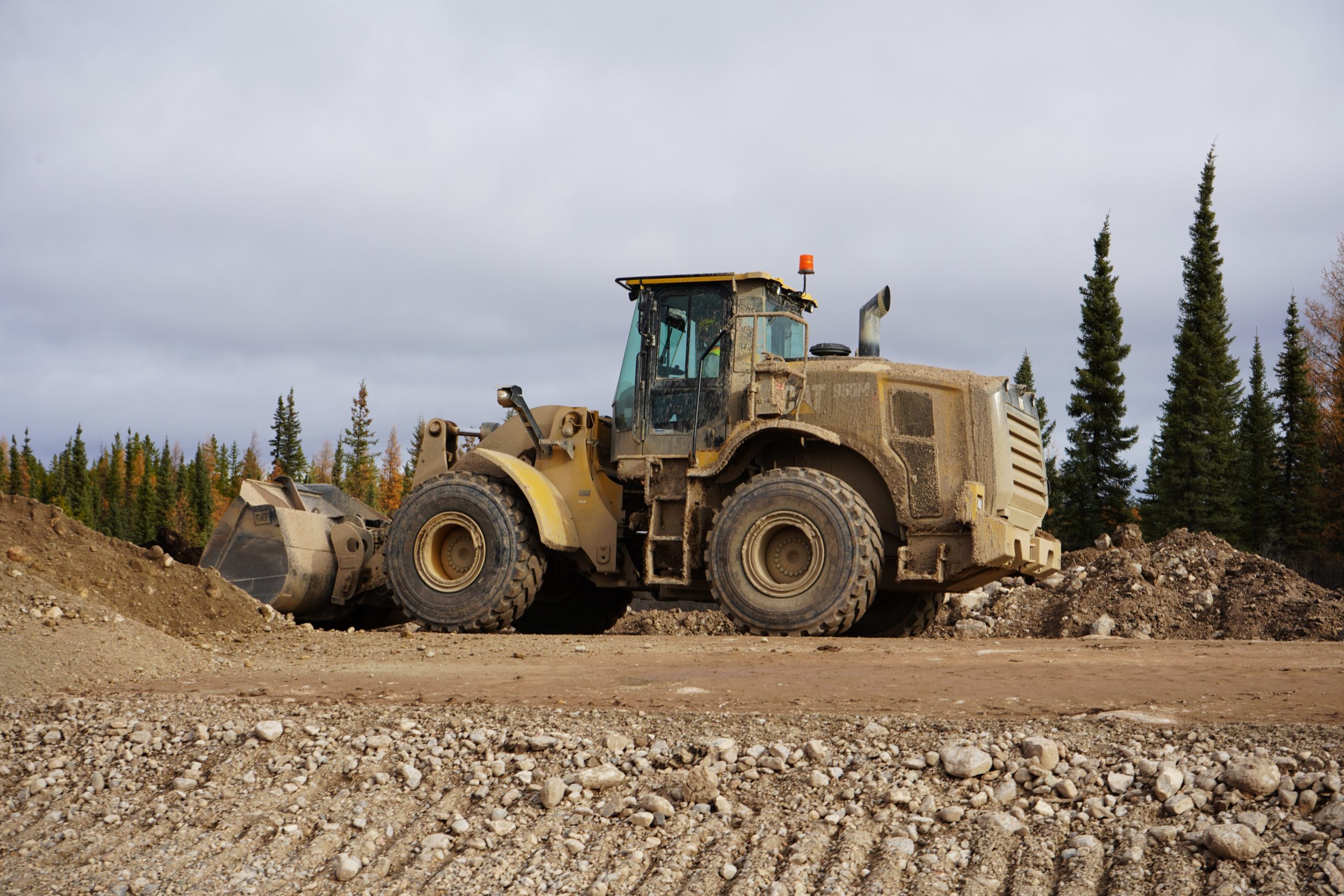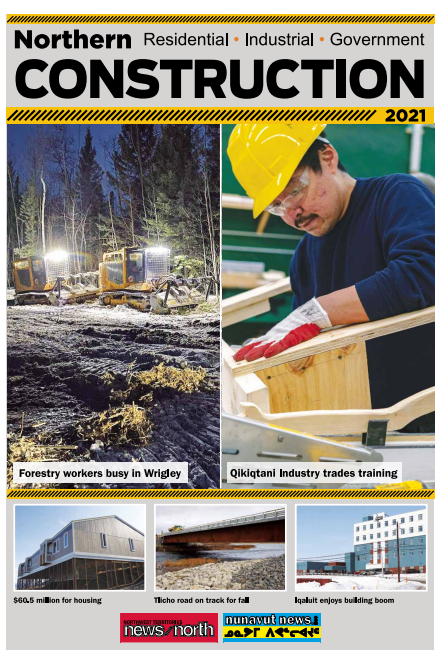Despite complications created by COVID-19, the goal to have Whati connected to the NWT highway system as of the end of November remains within target and on budget at $185 million, according to the GNWT.
Embankment construction is complete along the 97-km route, three out of four bridges are in place and 45 km of gravel surfacing is done.
Work is expected to resume on May 24, following a Dec. 15 seasonal shutdown.

photo courtesy of GNWT
After the emergence of Covid-19 last year, adjustments included a six-week pause, social distancing at the construction site, reorganizing the camp, bringing in a full-time nurse and travel restrictions.
Nevertheless, construction project manager Bruno Pigeon, with project-lead Kiewit Canada Development Corp., said the project is on pace for opening on Nov. 30.
“It's something we really proud of,” he said. “We're very happy with where we are with the progress of the job.”
Pigeon said the partnership formed by entities involved in the project – including the Tlicho Government, which has taken a 20 per cent ownership stake in the $412-million, 28-year highway construction and maintenance contract – is one of the best he's seen.
“It really contributed to the success of the job, especially going through the difficult times with the COVID pandemic,” he said.
The maximum number of workers on site to date was 276, of whom 128 – or 46 per cent – were Tlicho or NWT residents.
Pigeon anticipates a gradual ramp up later this spring with 40-50 employees resuming work in late May. That number will peak at approximately 125 this year. Close to 20 pieces of equipment will be on site, such as a 35-tonne and 50-tonne excavators, D-6 and D-8 bulldozers, a graders, haul trucks, water trucks and compactors.

The gravel, or aggregate, is being produced locally from rock that was blasted and crushed, or from quarries. The surface layer of compacted gravel is approximately 200 mm in depth, lying across nearly nine metres of road, wide enough for two lanes.
The remoteness of the project means greater forethought is required, according to Pigeon.
“It makes the planning so much more important to have all the resources that we need, to have our materials,” he said.
Weather is another variable that can have serious impacts, particularly during the winter of 2019-20 when the crews carried on work through January and February.
“The North is a whole different world,” he said. “The cold weather is a bit more difficult on the equipment but also on the people.”
There is some permafrost and seasonal frost along the route and it's important that the thaw is completed before the final stretch of gravel is in place to avoid “surprises” later on, said Pigeon.
Another consideration is to ensure nearby waterways are not contaminated. The Department of Lands sends inspectors for scheduled and surprise checkups to ensure environmental compliance.
In the legislative assembly on March 10, Infrastructure Minister Diane Archie said the Tlicho highway “represents a true collaboration” between the Community Government of Whati, the Tlicho Government, Kiewit Canada Development Corporation, the federal government, and the GNWT.
“It is an example of how infrastructure on Northwest Territories Indigenous territory can be carried out. The Tlicho highway runs through Tlicho lands, and the Tlicho Government's 20-per -cent-equity ownership in North Star Infrastructure is reflective of this important fact,” said Archie. “This highway has been a positive step towards reconciliation, and we will take lessons learned to apply to future projects ... Increasing access to Tlicho communities will help reduce the cost of living in the region and support new social opportunities, while also attracting interest from industry in the exploration and development of natural resources.”
